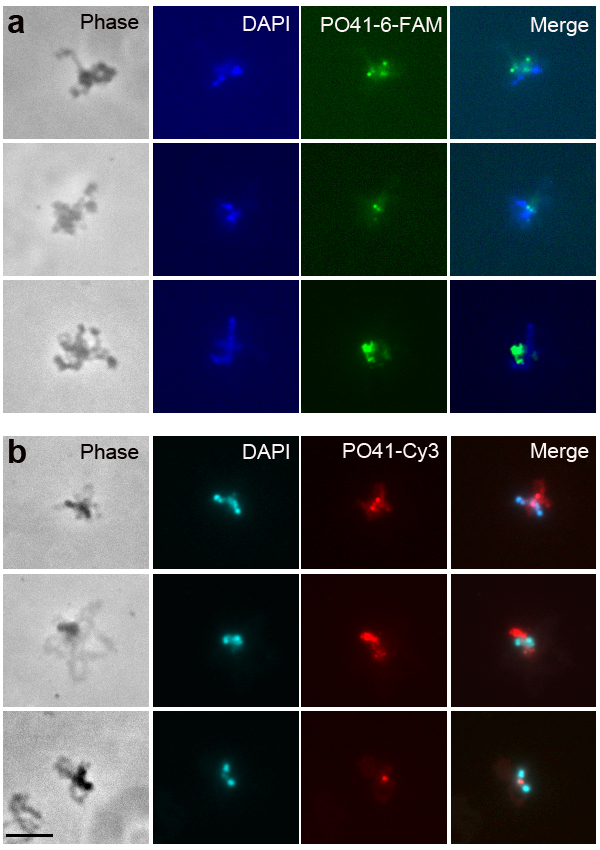IT-7-P-3342 Applying of 6-carboxyfluorescein (6-FAM) to cytogenetics
6-carboxyfluorescein (6-FAM) is one of the most commonly employed and simplest fluorescent reagents to use in oligonucleotide synthesis. 6-FAM is highly reactive, water-soluble single isomer of fluorescein, with absorbance/emission maxima in the visible region of the electromagnetic spectrum (492/517 nm respectively). 6-FAM plays a particularly important role in real-time PCR and SNP-analysis, being used in TaqMan probes, Scorpion primers and Molecular Beacons. Oligonucleotides labeled with 6-FAM at the 5’-end are widely adopted as PCR and DNA sequencing primers to generate fluorescently-labeled products for sequencing and genetic analysis. Per se 6-FAM-labeled oligonucleotides can be used as hybridization probes for fluorescent in situ hybridization (FISH), for example for a direct visualization of microorganisms in human and animal clinical samples (e.g. Behrens et al., 2004; Lin et al., 2011; Fontenete et al., 2013).
We used 6-FAM-labeled oligonucleotide probes specific for various chicken tandem repeats to detect RNA-transcripts and to localize them on giant transcriptionally active lampbrush chromosomes dissected from growing chicken oocytes. Lampbrush chromosomes have distinctive chromomere-loop patterns that enable high-resolution cytogenetic mapping of unique and repeat nucleotide sequences. We report that due to the high brightness and relatively long lifetime, the 6-FAM is found to be well suited for FISH proceeded accordingly with a DNA/(DNA+RNA) hybridization protocol.
The work is supported by SPbSU grant 1.37.153.2014 and grant for Leading Scientific Schools 3553.2014.4. The equipment used was provided by SPbSU Resource Research Centers “Chromas” and “Center for molecular and cell technologies”.
